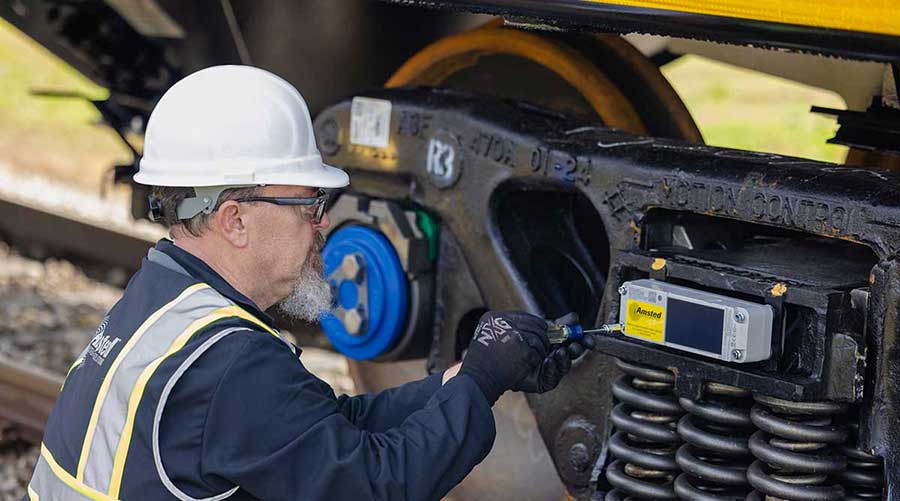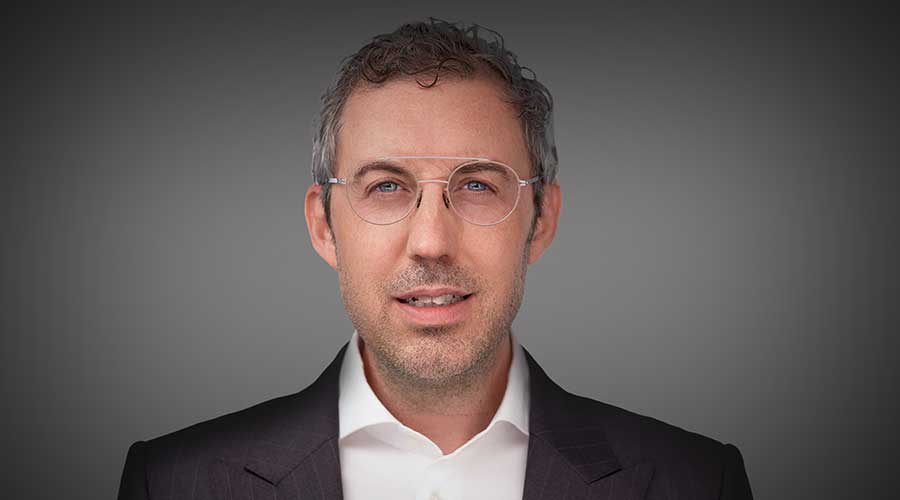Stay updated on news, articles and information for the rail industry
December 2021
Rail News: CSX Transportation
The growth focus and the Great Pivot: a RailTrends 2021 recap by Tony Hatch

By Tony Hatch
Wowza! RailTrends 2021 was indeed Live from New York City! RailTrends was eclectic and hectic, but the themes that emerged centered on railroads “talking the talk” on service and growth focus, and the big pivot to the themes that were juuuust beginning to emerge pre-pandemic: growth, ESG, technology. There were outside consultants and observers urging them to “walk the walk” (or is it “walk the talk”?) — notably, an unconvinced major carload shipper and an equally skeptical chairman of the STB — but there was also a clarion call from Oliver Wyman’s Rail Partner Adriene Bailey, who labeled these days the opportunity for the “Great Pivot” from efficiency (and the “Cult of the OR”) toward growth. This echoes the CSCMP Logistics 2030 report that called for a shift from cost-control to “ensuring supply.”
So: The RT21 Top 5 Takeaways:
1. Rail growth focus — echoed by the Class Is in attendance, notably Union Pacific EVP Marketing and Sales Kenny Rocker, the CPKC contingent, the short lines and, in what may prove to be a valedictory address, CN’s JJ Ruest. This current/future effort will be driven by technological advances, both defensive (operational) and offensive (customer-centric), and we heard not only form the rails themselves but from two suppliers/technology providers: Wabtec and RailPulse (below).
2. The existential battle for the soul of railroading — TCI vs. CN — was mentioned only in passing, but the commentary by CN on the future of railroading was an eloquent defense of the growth strategy, one we had been looking for. On the other hand, there was the attack on margin focus, headcount reduction and service deterioration (related?) by STB Chairman Martin Oberman, who used the TCI (and initial CN response) as an (the) example of the evils of shareholder-driven railroads.
3. Green shoots? The beginnings of a service/supply chain inflection, with no hopes for immediate success … but barring any further Acts of a Vengeful God (hello, BC mudslides?), the worst may indeed have passed? This appears to be true at the rails and, more critically, at the ports (note that container pricing has dropped by about one-fourth from its peak, even though it’s up ~3X YOY). Like the rails, the ports have instituted a carrot/stick approach to price and assessorials (and tried 24/7, to no great shakes, and “sweeper ships,” pop-up yards etc.). There’s been a massive amount of “Supply Chain Crisis” discussion, but as Galileo said about intermodal: And yet it moves: Truck tonnage was up just under 2% YOY in October and IANA reports IM was up almost 7% for the same month (Domestic up 3%, International up 10%). The AAR noted that Chicago volumes were up 11% YOY. … The FT and others see little to no evidence that the “crisis” is pushing de-globalization (which would be a relief for rails) — note the widening trade gaps, in general, and to China, in particular. Just-in-Case may also be a pipe dream, but that would be a pleasant one for rails.
4. A labor inflection? Labor is obviously greatly connected to the overall service/supply chain issue and, of course, it’s complex. The short-line panel noted that labor issues had spread to their segment, but the Class Is, notably CSX, were more sanguine about their pipeline. What didn’t get talked about were the National Labor discussions — such a major deal, given the timing, the administration and the national shortages, but also the coming technological opportunities. … Also on the horizon, and just what the twin port of LA/LB needed, is the 2022 ILWU negotiations. … Labor's renewed power has many positive economic implications, but one manifestation is the FRA's waiver revocation of automated track inspection — a poor outcome for efficiency — and safety, as noted by AAR President and CEO Ian Jefferies.
5. The CP-KCS (CPKCS) merger — What shocked me about the application was the huge percentage of synergy volume that was rail-based and that didn’t go unnoticed at RT21. Subsequently, the formerly hidden Class I opinions spilled into the open (from my Tweets):
• “Shoes Dropping as hinted at RT21, UNP (and CNI) urged the STB to reject the CPKC merger application (NOT, per se, the merger itself) claiming the lack of detail, especially surrounding Mexican gateways; this, despite the applications total of 4342 pages. CP responded that CPKC’s “impact on competition will be positive; the impact on competitors may not be.” Game on! The STB didn’t take long to reply...”
• “’Nyet’ says STB to CN and UP (and, in supporting roles, CSX and BNSF in accepting the CPKC application, stressing the “old rules” format. Merger comments are due 2/26/22 (and I certainly expect much backroom “discussion”) as well as, or more than, public commentary). Then, rebuttals will be due roughly a month later —final briefs due 7/1. And while the STB has denied applications and required re-submissions before (see CSX/Pan Am) the fact that they didn’t hear does not dissuade me from my opinion that the actual review will be lengthy. Indeed, it will be a busy winter/spring for the STB — and rails — in general!”
In many ways, the argument over rail share in the North-South lanes is (a) a fight to restore Mike Haverty’s original legacy, a “go-it-alone” strategy (for example, from Lazaro Cardenas into the U.S. heartland on the KCS, now perhaps further on the CPKC); and (b) a battle over the value of single-line service advantages over a shorter but multi-rail (for example, the UP to KCSM) service offering — which is ironic since the fight to put together CPKC itself likely put the kibosh on any future (“Big Four”) transcon consolidation.
Other RT21 takeaways from the presentations:
• Regulation. This could have been a major takeaway listed above but (a) much of this debate, while critical, has been known since the summer; and (b) five is a nice number. The STB will hold a series of hearings in early 2022 (quoth Ian Jefferies of the AAR: The STB “has a brand new hearing room and is dying to use it.”). The AAR is frustrated with what it (and I) see as a pro-labor stance that serves as a deterrent to technology (see above) and on an interventionist STB pushing reciprocal switching/forced access in a time of supply chain crisis. When the Chairman spoke, it did surprise because he actually praised the railways for stepping up during the “Crisis.” (noting that “rails were not the cause!”)
But after the sugar came the spice — Chairman Oberman said rail service has deteriorated in the three years he has served on the board, yet rails have cut headcount, pushed longer trains, de-marketed and spent their cash on their shareholders (that “drain” coming at the expense of service and employees, he said). There is truth in all of those statements, just no linked causality. And then there’s the TCI example, on which we agree. As I raised the issue in the Q&A, rails haven’t become “too shareholder-centric” except in extreme times, though that risk exists and the battle of long- and short-term shareholder interests is eternal. But, IMHO, in the rail case, the long term usually wins — note the capex spent this century! But this is where the railways walk is so critical, because DC isn’t listening to the talk!
Here are some key dates for winter/spring hearings — after all, outside of M&A and rate cases, STB solutions take time and the board serves mostly, as Chairman Oberman noted, as a “bully pulpit”): Jan. 13 on CSX and the Pan Am Railway; Feb. 15 on Amtrak (and CSX & NS) in the Gulf; and the granddaddy of the bowl games, reciprocal switching (“forced access”) on March 15-16. There’s no info yet on hearings on CPKC, but I am guessing the board will like the sound of their new room and hold some. Also: No mention of hearings or discussion on the WC lines or Massena.
The Sanimax case has been allowed to proceed. This could be BIG, and it wasn’t well-noticed, but the Chairman made special mention of it: a Minnesota shipper case argues that the UP’s poor service amounts to a violation of their common carrier obligation. As Matt Rose warned way, way back in 2019, the CCO is the potential Achilles heel of the PSR crowd and price/de-marketing — another reason the rails better walk tall and quickly.
The Chairman noted that the next few years could and should see a boom in PPPs in such things as inland ports and other supply chain enablers.
The Railway Association of Canada’s Marc Brazeau told RT21 attendees that the Canadian railways were cooperating with the Canadian government (Transport Canada) to bring about a new and improved (and cheaper) form of PTC to Canada — and that we may see progress within 18 months!
• The Great Pivot. The annual Oliver Wyman presentation highlighted the choice for railroads — essentially Grow or Shrink (the latter being what the STB fears/expects). Which way will they go? OW’s Bailey noted that rails’ gains in efficiency and in technology were both impressive and necessary (what I call “PSR 1.0” or the baseline), but “at some point cost-cutting alone becomes a value destroyer.” Railroads are holding share (Larry Gross will dispute that, below). We are at that great pivot point (“the future is up for grabs!”) and, to OW, the railroads need to:
1. Serve the new supply chain (note that on the daily, the service requirements of the rail traffic mix go up, even as JIC and technology give rails a chance to better compete).
2. Improve the Transit Experience (it’s the service – stupid!)
3. Embrace Customer Centricity.
To that end, Rail Pulse, the visibility game-changer, was represented by two-fifths of its founding members (NS/Mike McClellan and Trinity/Gregg Mitchell). The platform for rail cars (location/condition, safety monitoring, etc.) has its launch date accelerated (year-end 2022), and Rail Pulse officials expect new member announcements very soonish.
Meanwhile, Wabtec CMO Gina Trombley echoed the G/P clarion call, leading a charge in both sustainability (where she quoted CN’s head of Sustainability Janet Drysdale as saying that, for rails, it wasn’t a silver bullet but rather a silver bucket!). The rails, Wabtec and others have to continue to push the envelope because their current huge emissions advantage is, as I have been calling it, temporary and tactical (CN’s Ruest noted that the current state of the advantage “will eventually come to an end”). Trombley discussed Wabtec’s efforts in new locomotive power (“a process,” albeit one with huge incremental upside) and full automation — from “reimagined rail yards and terminals” to single-person crews (see Labor, above).
And: The Larry Gross intermodal presentation was a challenge to the emerging “Talk” thesis — noting that volume peaked in March and that the demand blame for the supply chain crisis was, perhaps, overstated. He assumed the 2021 “Doctor Doom” title (Rod Case being on the IR list with an oblique injury) by stating that rail “intermodal took a major hit in 2021; the damage is reparable,” but rails have lost share and given up most of the gains made over the past decade! This echoes what I termed the “red zone fumble” of the rails failure to capture sticky container business in truck-challenged 2018 into 2019.
• CPKC! CP(KC)'s rock-star CEO Keith Creel didn't disappoint nor back down from the revelation of how much of the expected synergies, especially by and after Year Three, were coming from rail. He noted they weren’t planning to go to war, but … we didn’t list any questions for Keith in my RT Preview because, well, it simply wasn’t necessary! CP will need to spend (~$300mm in the U.S. Midwest, so I am assuming those are greenbacks not Loonies) to compete, and they just raised money ($2.2B) on the debt market. He seemed thrilled by the adventure he and his team are in, and the one to come (“this is the biggest thing in our lives”). In other news, he noted three things about CP’s sustainability efforts: their hydrogen-powered locomotive project; the solar farm at their headquarters in Calgary; their recognition at the COP26 summit!
• KCS was in the house in abundance, particularly during a great ceremony for departing EVP of PSR Sameh Fahmy. COO John Orr presented his work following on Sameh’s in creating a true (and positive) PSR culture at KCS (just in time for Mr. Creel) … creating what Orr called a “speak-up culture” and promoting “creative tension” — phrases I have heard in Calgary. John also showed some notable metrics improvement, especially in Mexico.
• Union Pacific CMO Kenny Rocker didn’t take the bait on the merger competition, sad to say (from a drama perspective only). Although the heart of their intermodal franchise is the N/S Pacer lanes seemingly targeted by CPKC, Kenny noted only that they “are not afraid to compete.” In truth, they do have a brand and mileage advantage. Rocker focused on the big picture, and seemed to eerily but positively echo OW: “It’s all about the growth.” I was pleased that he discussed “leveraging PSR” into that growth — it must be made clear to DC that the disruptive part of PSR implementation is over but the benefits remain, and can be part of that “pivot” (quoting both OW and CP). He also discussed UP’s plan (in effect, unattributed) to follow the pattern established by the PSR motherships in Canada (cost-to-growth, then) by expanding their network reach (intermodal, “AccessUP,” Loup logistics (M&A? CEO Lance Fritz has hinted recently). … One thought occurred to me: The CPKC maps showed two critical pinch points in Texas where KCS moves over UP trackage rights. I see a Travis-like line in the sand, maybe.
• The short lines showed why they are the beating heart of entrepreneurial railroading. At RT21 we were lucky not to suffer from the one-time only simultaneous ASLRRA/RT timing, with a great panel featuring an owner (Anacostia Rail Holdings’ Bruce Lieberman), a short-line president (Mike Miller of Genesee & Wyoming) and two top marketing execs (Watco’s Jimmy Patterson and R. J. Corman’s Alin Campian). Two of them, Watco and Genesee & Wyoming) are also charter members of Rail Pulse.
Their consensus was that private equity sales of short-line holding companies would be the deal driver “over the next three to five years,” even after “seeing a lot of (such) activity in the next 18 months. Secondarily would be more switching deals (a la Watco-Dow), and other ancillary/complementary deals.
• CSX CMO Kevin Boone saw some daylight, feeling “so much better today than three months ago” in filling the (40/week) crew/training pipeline despite challenges on the labor front and the “best growth opportunities in years and years” — what’s not to like about that? Kevin noted the tailwinds for his carrier and his peers — the E in ESG, inflation pressures being good for low cost transportation, the driver shortage, on-shoring (though neither UP nor myself have seen the evidence), and improvements in service quality … and the Quality Carriers acquisition, in the very early innings, along with PAR, show the pattern of PSR under Jim Foote that we saw at CN (and, under KC, at CP).
• CN President and CEO JJ Ruest received the Progressive Railroading/RailTrends “Railroad Innovator Award” for his body of work “Redefining the Future of the Railroad” through a growth lens (noting his development of new business opportunities at Prince Rupert (and NOLA/Mobile), new technologies and the “Feed the Beast” mindset. JJ, with team in tow, discussed some recurring themes that are/will be put to the test in the TCI (and Elliott?) fight — the Digital Scheduled Railroad, the stakeholder-served railroad, the growth strategy focused on earnings/cash flow and ROIC financial results not (just) the OR. CN noted that their big cut in capex (17% — as a % of revenue) comes after years of capacity additions (up to 25%+ of revenues and is also due to the huge hit in the anticipated Canadian grain crop. CN continues to support built-in resiliency and supply-chain thinking (and, separately, JJ allowed that CN was still on the hunt for ancillary FTB acquisitions!). If this defense had been unveiled in September things would be very different indeed.


 LRW Honors Amtrak’s Acheson As Railway Woman Of The Year
LRW Honors Amtrak’s Acheson As Railway Woman Of The Year
 From Editor-In-Chief Foran: Of Gender Equity And Inclusion
From Editor-In-Chief Foran: Of Gender Equity And Inclusion
 Spotlight On Some Of Today’s Rail Safety Products
Spotlight On Some Of Today’s Rail Safety Products
 Women of Influence in Rail eBook
Women of Influence in Rail eBook
 railPrime
railPrime






